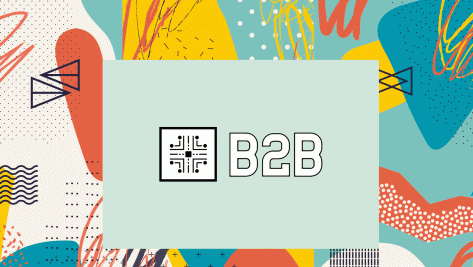Marketers are often told that a great brand name must mean something. The logic seems unassailable: a meaningful name – say, “Leaf” for an eco-friendly product or “Zoom” for a video-conferencing tool – immediately communicates purpose and makes the brand easier to remember. In theory, semantic clarity equals market success.
Yet in practice, some of the world’s most admired brands often break that rule. Think of Etsy, Spotify, Haagen-Dazs, or Goop. None of these names carry inherent meaning, yet each has carved out a distinctive and powerful identity.
In fact, “meaningless” names – what we call non-semantic names – can actually make business sense. Across four studies involving thousands of consumers, my coauthors Polina Landgraf of University of Virginia and Jonathan Luffarelli of Montpellier Business School and I found that non-semantic brand names can spark curiosity, heighten engagement, and ultimately improve brand evaluations.
In other words, a name that says nothing at all can make people care more.
The Curiosity Effect
When consumers encounter something unfamiliar, their brains itch to make sense of it. A non-semantic name doesn’t fit neatly into their existing mental categories. It feels novel, ambiguous, and slightly puzzling—and those qualities arouse curiosity.
Curiosity, in turn, is a powerful motivational force. Decades of psychology show that when curiosity is triggered, people seek information more actively and process it more deeply. In marketing terms, that means they are more likely to read, watch, click, and think. And when the information they discover is compelling, curiosity amplifies its persuasive impact.
So, while a name like Leaf instantly tells consumers what a brand stands for, a name like Leuf might make them pause – and that momentary pause can be gold. If the subsequent story or product information satisfies the curiosity that pause creates, evaluations rise dramatically.
Names that spark curiosity invite deeper engagement.
We first tested this idea in the real world, analyzing 6,487 crowdfunding campaigns for technology products across 22 countries on Kickstarter. After controlling for campaign design, quality, popularity, and country effects, we found that brands with non-semantic names raised 17.1% more funding on average than those with semantic names. For the average campaign, that meant an extra $17,281 in investor backing.
That’s a striking effect for something as simple – and as inexpensive – as a name.
Crowdfunding investors, much like consumers, encounter hundreds of options at once. The first thing they see is often the brand name. Our data show that names that spark curiosity invite deeper engagement: backers click, explore, and eventually invest more.
To ensure that the effect wasn’t a fluke of platform dynamics, we moved into controlled experiments. In one study, participants were introduced to a new generative-AI assistant. Some saw it branded with a semantic name, “Brownie.” Others saw it branded with a non-semantic name, a random letter combination derived from the same word (for instance, “Rowiben” or “Berwoni”). Everything else – the description, visuals, and information – was identical.
Consumers were then asked how much they’d be willing to pay for a monthly subscription. On average, participants offered 32% more for the AI assistant with the nonsense name. The meaningless version didn’t merely avoid confusion; it created intrigue.
Our third study confirmed the psychological mechanism. Participants evaluated a crowdfunding campaign for a reusable “smart” notebook. In one condition, the brand name was semantic (Sovereign). In another, it was non-semantic (Orbi). We measured participants’ curiosity after seeing only the campaign preview, then their persuasion and willingness to invest after they read the full description.
The findings were clear: non-semantic names triggered significantly higher curiosity, which in turn increased persuasion and willingness to invest. Statistically, curiosity fully mediated the relationship between name type and investment intent.
In plain terms: the meaningless name made people want to know more—and once they knew more, they liked the brand better.
The Limits of Curiosity
Of course, curiosity alone isn’t enough.
Our final study, conducted in the context of cryptocurrency investing, showed that the advantage of non-semantic names disappears when there’s no compelling information to satisfy the curiosity they provoke.
Participants were shown webpages resembling Coinbase listings for a new cryptocurrency. When the page included credible information – returns, popularity rankings, third-party endorsements – participants were significantly more willing to invest in the coin with the non-semantic name (Mounzie) than the one with a semantic name (Brownie).
But when all that information was removed, the difference vanished. Without substance to discover, curiosity quickly fades. The lesson for marketers is critical: curiosity amplifies persuasion only when there’s something worth discovering.
Rethinking the “Rules” of Naming
For decades, branding textbooks have emphasized clarity and meaning in name design. The assumption is that consumers prefer names that help them quickly identify what a product is or does.
That logic still holds – especially when the name’s meaning is congruent and communicates the benefits of the product itself. “Mountain,” for instance, is an effective semantic name for a brand of trail mix. An emerging problem with this approach is that the semantic landscape that consumers hold in their heads gets saturated fast. Every new brand name conveying meaning automatically reduces the potential of subsequent meaningful names to convey what they aim to. For instance, the brand name Linkedin puts obstacles for newer brand names’ ability to emphasize any benefit related to “links”, even if the “link” refers to URLs, links in a supply chain, or some engineering process.
Our research provides an alternative path. Instead of taking the risk of a meaningful name that could be overshadowed, a bit of semantic mystery can be a competitive advantage – especially when the goal is to stand out, invite exploration, or convey innovation (e.g., in technology-driven categories). Brands like Etsy and Klarna succeed not because their names explain themselves, but because they invite consumers to ask, “What is that?”
The Managerial Takeaways
The broader implication is that meaning is not always meaningful. In an attention-scarce marketplace, a touch of “nonsense” can work precisely because it disrupts cognitive autopilot. For managers deciding between a clear, descriptive name and an unusual, non-semantic one, here’s what to consider:
- Use curiosity strategically. Non-semantic names are most effective when they serve as an entry point into a rich story. Make sure the rest of your brand communication rewards the curiosity the name evokes.
- Mind the information environment. A nonsense name without meaningful follow-up content can confuse or frustrate consumers. Pair such names with clear, compelling messaging – on websites, packaging, or in crowdfunding pitches—that satisfies the initial intrigue.
- Match the name to the market. Curiosity works best in contexts that encourage exploration – technology, lifestyle, or fashion, for example. In high-risk or utilitarian categories (like insurance or healthcare), semantic clarity still matters.
- Think of naming as an investment. Our crowdfunding analysis suggests that choosing a non-semantic name could raise average consumer engagement and funding by more than 17%. For startups and innovators, that’s a material performance boost at zero marginal cost.
Branding experts have long preached that clarity and meaning are the hallmarks of an effective name, but in many contexts, a little bit of nonsense can go a long way. When crafted and supported thoughtfully, meaningless names don’t confuse consumers, they captivate them. And in a world competing for scarce attention, curiosity may just be the most meaningful asset a brand can own.
© IE Insights.
This paper was partially funded by the Spanish Agencia Estatal de Investigación MCIN /AEI /10.13039/501100011033 / FEDER, UE Grant No. PID2022-138729OA-I00.











